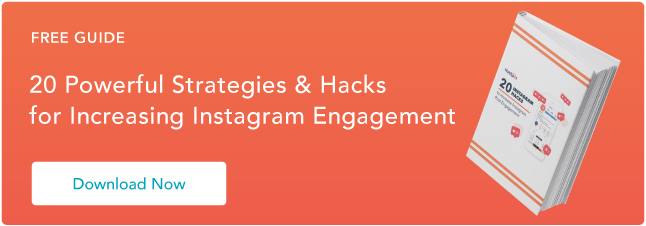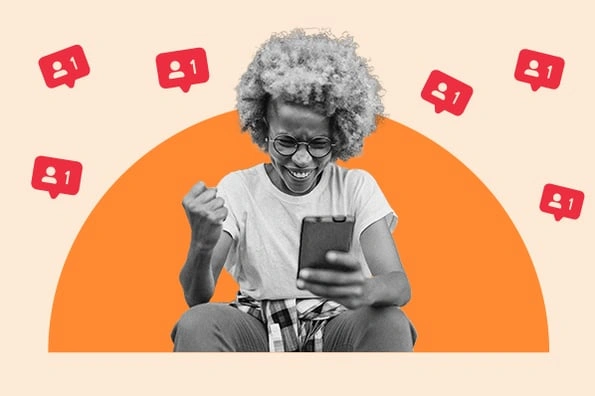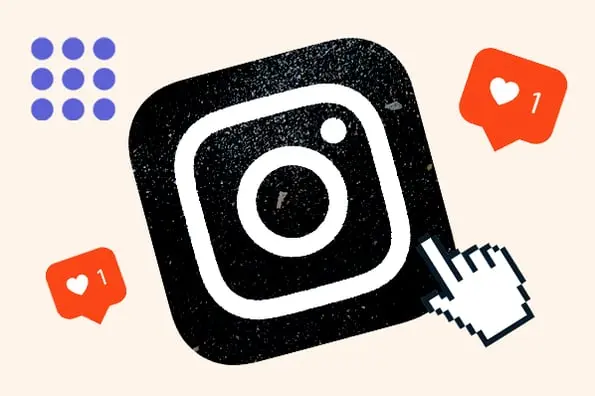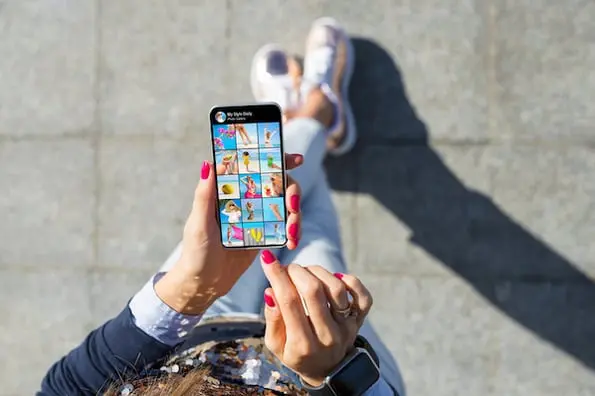Instagram is a wildly popular platform for consumers and companies alike. One reason the platform is so successful is due to its visual nature. Not only are images and videos more engaging than written text, but visual content is remembered more than text.

But deciphering exactly what kind of visual content to post is tough. It can take a lot of work to develop visual content, so it’s important to know where to focus your resources.
When it comes to Instagram, should you be posting more images, GIFs, or videos? Which medium is best for engaging your audience? Where should you dedicate your resources?
I sat down with Kelly Hendrickson, Social Media Marketing Manager at HubSpot, to better understand the answer.
Images vs. GIFs vs. Video
Before we dive into Hendrickson’s comparison, let’s outline a few important distinctions on Instagram.
First, there are two sides to social media content: organic and paid. Organic content is unpaid content that falls into the natural Instagram algorithm. Paid content follows a different algorithm. “With a lot more factors at play, the question of performance involves more than just the medium,” Hendrickson commented.
Secondly, Instagram offers two main ways to share content: posts and Stories. These channels affect the performance of certain media, so the question of images versus GIFs versus video varies between the two.
Lastly, according to Hendrickson, GIFs are seen as video content on the Instagram wall. (Technically, you can't upload a GIF to Instagram — to post one, you'd need to upload it as a video anyway. Learn more how to do that here.)
So, how do images and videos/GIFs stack up when shared …
- … organically and via paid content?
- … on posts and Instagram Stories?
Let’s start with organic versus paid.
“Organically, images can reach as many as 2x more people,” Hendrickson shared. “This isn’t to say that video couldn’t work for you, but Instagram was always designed as an image-first platform.”
Considering that both networks are owned by Facebook and that Facebook is so video-heavy, it makes sense that Instagram is the original image platform.
“This isn’t black-and-white, but algorithms can reveal themselves,” Hendrickson said. “Now, a video with high engagement — that could bust through the algorithm. However, we’ve seen images perform much better on Instagram.”
Although paid content is faced with many more factors beyond the medium itself, the HubSpot team has seen the same impact of images. Note: This is more an observation of user behavior trends on the market, not something the team itself has proven.
The main question with paid content, however, is: what is the purpose of the ad? The answer to this will help determine how well a certain medium might perform on Instagram.
Hendrickson and her team haven’t explored much with paid video content because of their organic results, but they have noticed a growing trend. “Something that has become popular … is subtle animation — a five-second animated image. It’s technically a video but visually closer to a GIF,” Hendrickson explained.
Many marketers use them to garner clicks and attract Instagram users from the content stream to their profiles and websites.
When analyzing Instagram Stories, the answer is less clear. “Stories are truly the black box of social media,” Hendrickson admitted. “With everything else, you can understand the reasons for certain results — it’s not the same for Stories.” Because of this, it’s tough to decipher the very best medium for Stories.
One important distinction that Hendrickson and her team have been able to identify, however, is this: the more branded your Instagram Story content looks (whether a video or image), the poorer it performs.
“The closer it could look to everyday posts shared by friends, the better it will do,” Hendrickson explained.
There are plenty of engagement opportunities with Instagram Stories. Stories themselves are helpful in engaging audiences; it’s not as much about the medium.
When it comes to paid Story content, Instagram sets tight restrictions. Marketers only get one feature — a single frame or poll — which means there’s not much room for A/B tests on Stories. For that reason, HubSpot hasn’t explored paid Stories much.
On the other hand, organic Instagram Stories have revealed some new trends. “While we’ve seen image-based Stories can do a bit better than videos of people talking to the camera, on any given day, you could have a Story with many of the same metrics but a reach of 30% more. With a lot of social media, you can figure out why — but not the same with Instagram Stories," Hendrickson shared.
There you have it — images perform better for both organic and paid Instagram content, as well as in Instagram Stories. If you choose to post on your Instagram Stories, the more natural your content, the better. These findings aren’t to say video and GIF content doesn’t succeed, however. Implement these trends alongside your audience analytics to produce the most impactful Instagram content.





![When Is the Best Time to Post on Instagram in 2023? [Cheat Sheet]](https://blog.hubspot.com/hubfs/best-time-to-post-on-instagram-3.jpg)
![How to Post to Instagram From Your Computer [12 Easy Steps]](https://blog.hubspot.com/hubfs/how-to-post-to-instagram-from-your-computer.jpeg)




